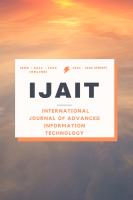Alpha Activity in EEG and Intelligence
International Journal of Advanced Information Technology (IJAIT), 2 (1):
27-36 (February 2012)DOI: 10.5121/ijait.2012.2103
Abstract
Intelligence of a human being in general is considered as to its variations in the ability to learn, to function in society, and to behave according to contemporary social expectations Intelligence of a human being is associated with brain the brain is considered as the most complex biological existent structure. Electroencephalograph (EEG) is an instrument used for recording the electrical activity of the brain. EEG is the variation of the electrical fields in the cortex or on the surface of scalp caused by the physiological activities of the brain. EEG is currently the most widely adopted method for assessing brain activities. Detecting the changes of these waves is critical for understanding of brain function. In clinical applications, spontaneous EEG signals can be divided into several rhythms according to their frequency. They are δ rhythm (0.1-4Hz), θ rhythm (4-8Hz), α rhythm (8-13), β and rhythm (13-30Hz). The EEG
signals have close relationships with the cerebral diseases, mental status and human qualities like intelligence. As a consequence it is very useful to analyze process and classify the EEG signal on the basis of frequency bands and then extract their underlying features and so as to correlate with normal and abnormal functioning of brain, sleep, mental status and also with intelligence. In this paper we propose to conduct pointed literature survey of alpha activity and intelligence correlation. We propose to conduct test on subjects by computer, EEG interface. We propose to conclude from practical experimentation, whether there is a correlation between alpha activity power and intelligence.
